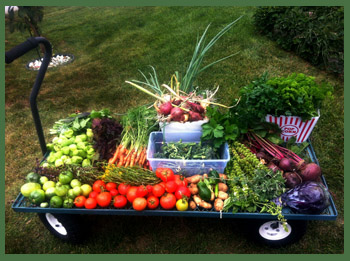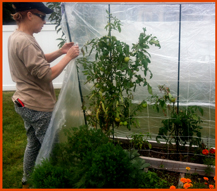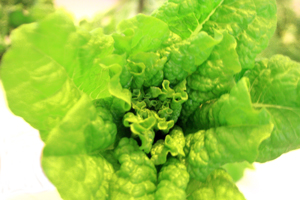 Today is the day that I almost dread, except that seeing a true harvest from my own Square Foot Garden is so wonderful. So, why do I dread it? Because they are predicting the first Freezing Rain of the Season. It’s time to pull in what we can and then tend to what we hope will continue on through the cold. On the cart, you will see a good share of the remains of the Raised Bed, Square Foot Method for this year. Though there will be more to come, this is an effort to begin to put the garden to bed for this season.
Today is the day that I almost dread, except that seeing a true harvest from my own Square Foot Garden is so wonderful. So, why do I dread it? Because they are predicting the first Freezing Rain of the Season. It’s time to pull in what we can and then tend to what we hope will continue on through the cold. On the cart, you will see a good share of the remains of the Raised Bed, Square Foot Method for this year. Though there will be more to come, this is an effort to begin to put the garden to bed for this season.
This year’s garden was truly an experiment. I wanted to see how many different things I could grow in two 8′ x 4′ beds, growing enough to feed two adults with some left over to share of each item we chose. We have certainly pulled in earlier harvests than this, but this is the largest harvest at one time for this season. On the cart you will find the following:
- Asian Greens
- Tomatilloes
- Sushi Lettuce
- Tomatoes (Red and Green)
- Thai Basil
- Sweet Basil
- French Tarragon
- Carrots
- Red Onions
- White Onions
- Walla Walla Onions
- Green Onions
- Leeks
- Broccoli
- Potatoes
- Green Peppers
- Greek Peppers
- Mint
- Beets
- Curly Parsley
- Italian Parsley
- Utah Celery
- Oregano
- Beets
- Red Cabbage
- Okra
There is still plenty left in the frames. We spent 45 minutes cleaning out the beds and putting up a bit of plastic over one of the beds to see if we can get just a little bit more.
Here you can still see the following:
- Brussels Sprouts
- Italian Parsley
- Okra
- Peppers
- Broccoli
- Cabbages
- Artichoke Plants (though the Artichoke themselves are long gone.)
- Marigolds
- Carrots
- Asparagus
- Tomatoes
- Chives
- And few herb plants (which you cannot see due to the height of the Cabbage family plants)
We left the posts up with the net at the tomato area and placed plastic sheets  over the top allowing the posts to show through the plastic. We have allowed for airflow and we will make sure sufficient air is getting through. Our attempt is only to help shield it from the freezing rain for another couple of weeks to see what more we may yield from this harvest time.
over the top allowing the posts to show through the plastic. We have allowed for airflow and we will make sure sufficient air is getting through. Our attempt is only to help shield it from the freezing rain for another couple of weeks to see what more we may yield from this harvest time.
This shows the top. We just wrapped the sheeting around, leaving a bit of airflow space.
We also removed Artichoke, Radishes, Beets, Carrots, Broccoli, Lettuces, Peas, Chives, Caraway, Rosemary, and Thyme earlier in the season.
Not bad for two little 8′ x 4′ beds!




















